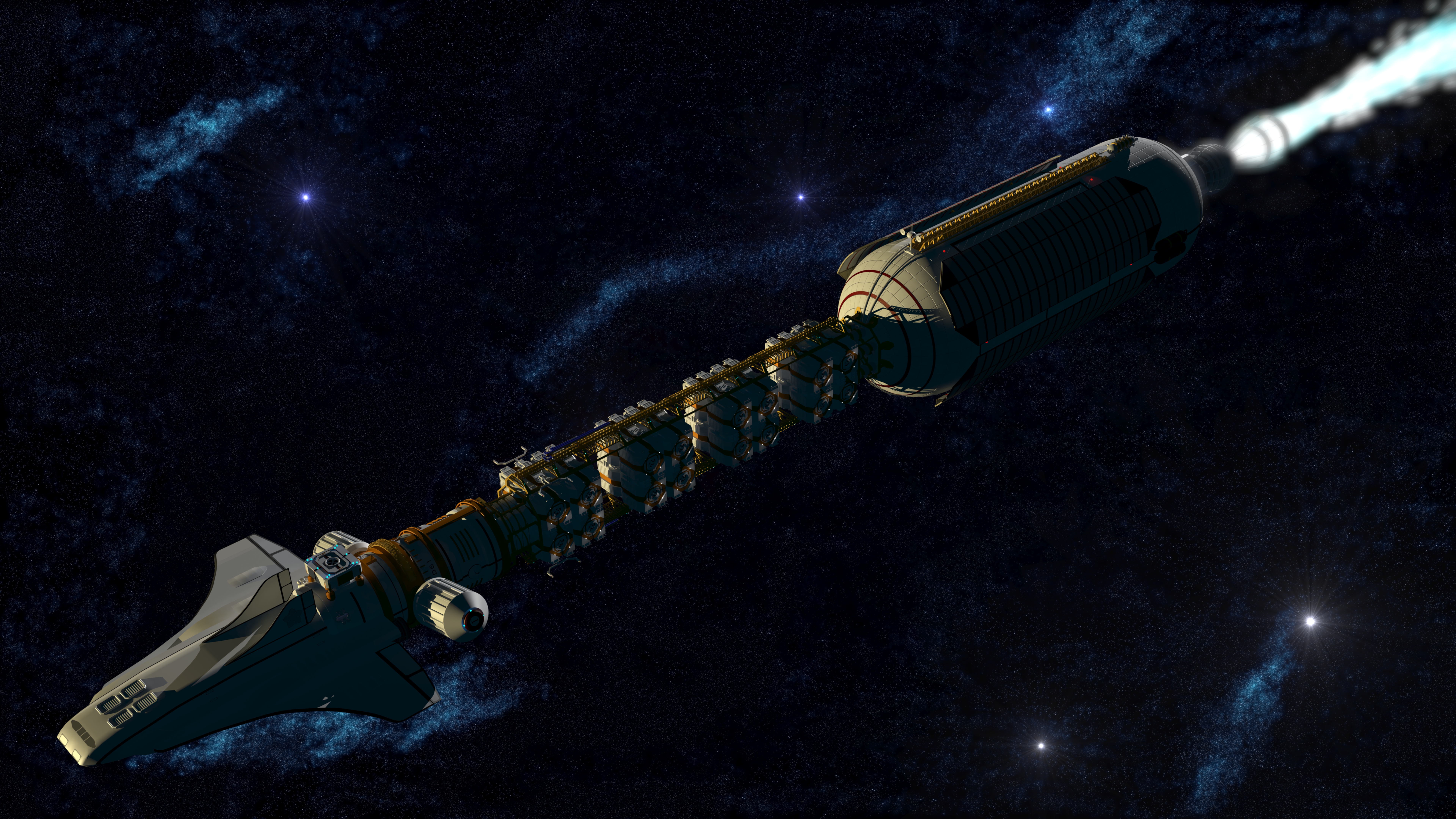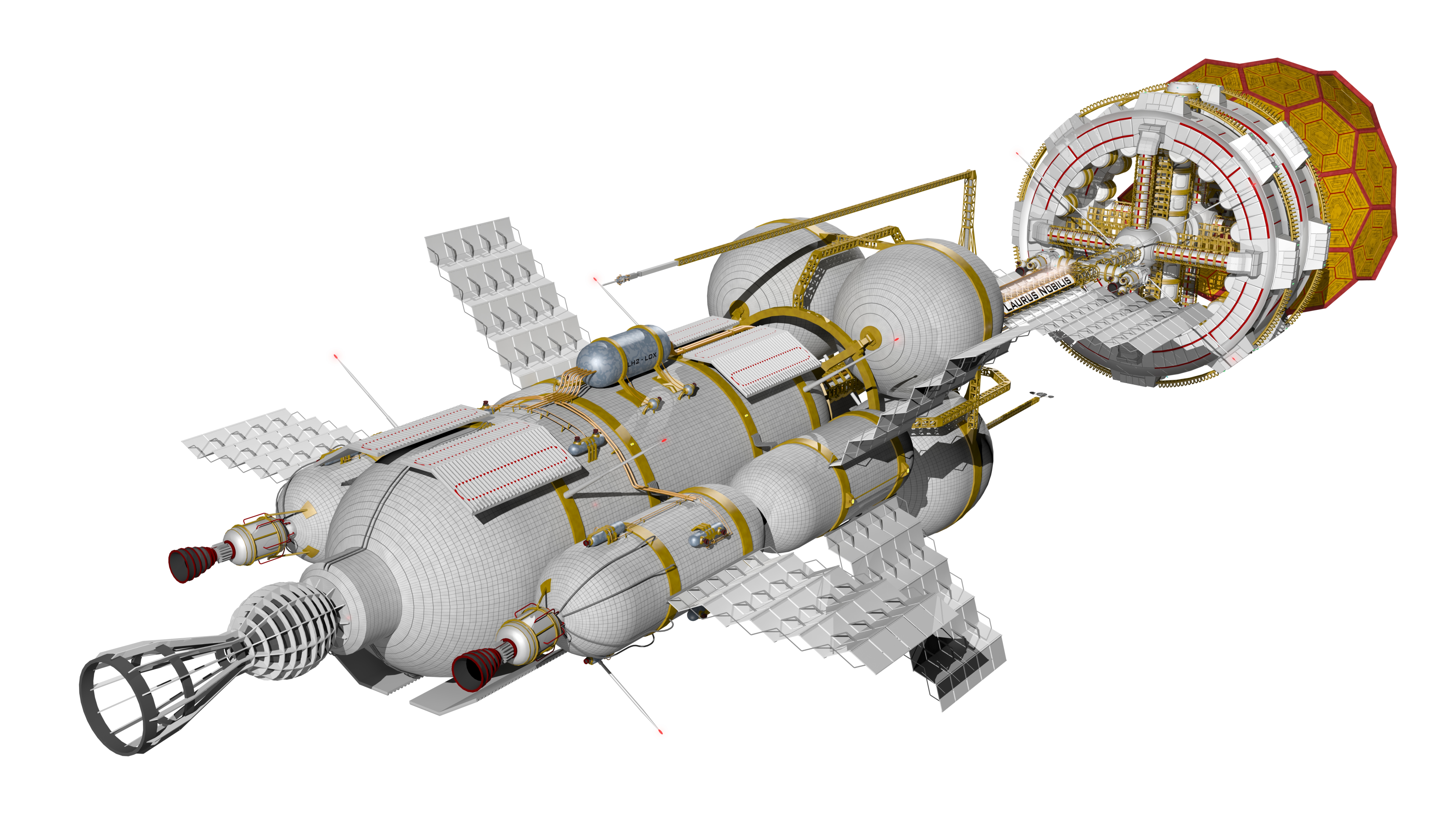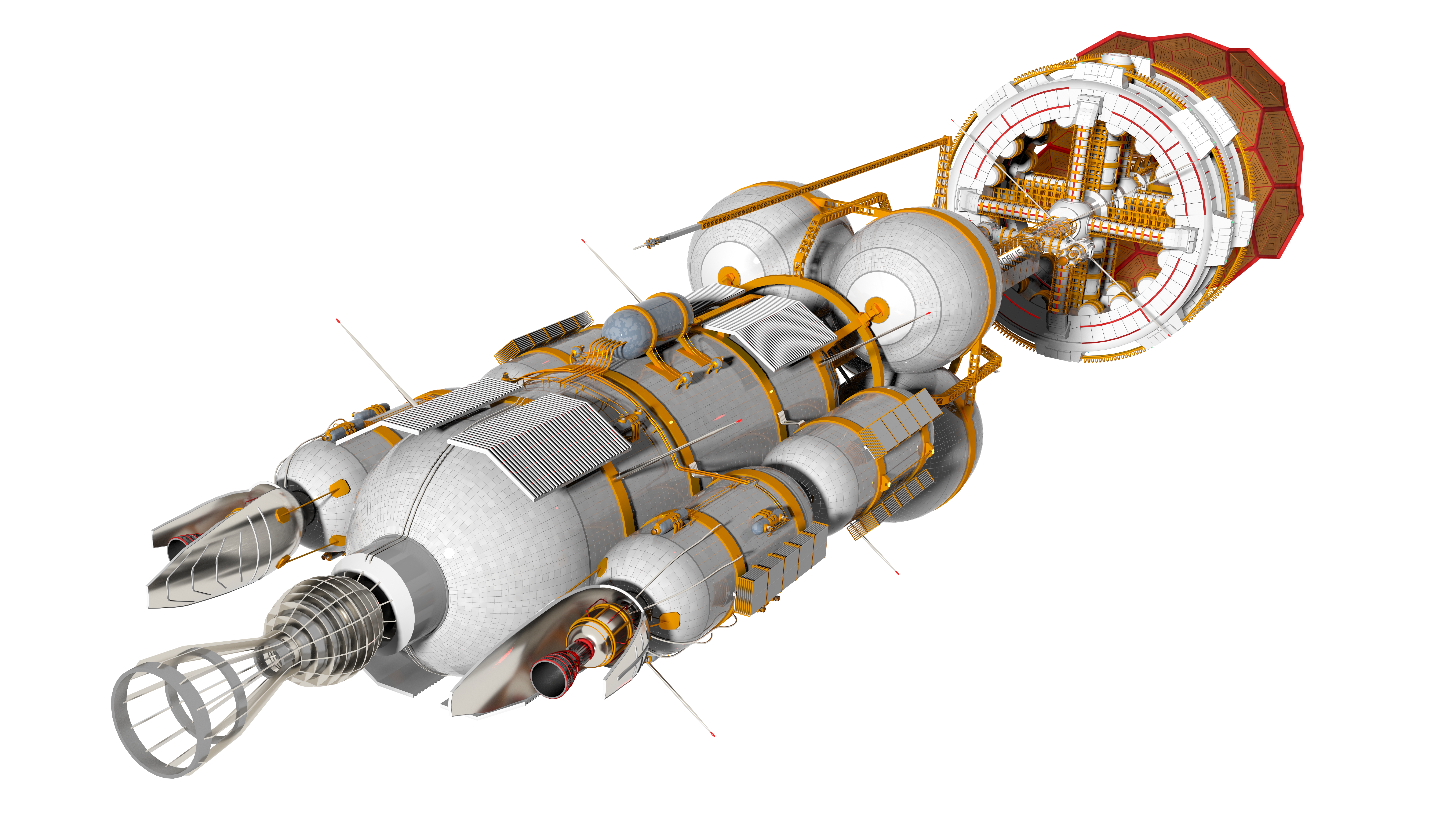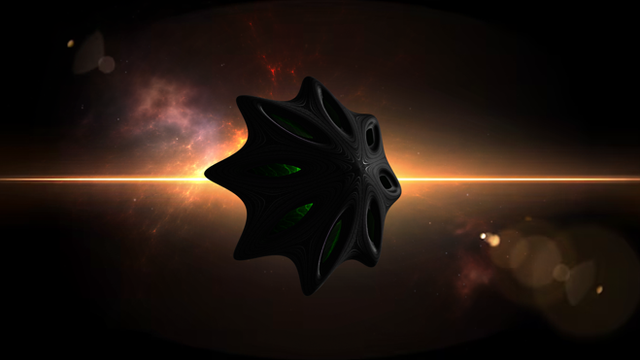HOME | DD
 Do-Mo — Jovian command ship - Shelly (+a short animation)
Do-Mo — Jovian command ship - Shelly (+a short animation)
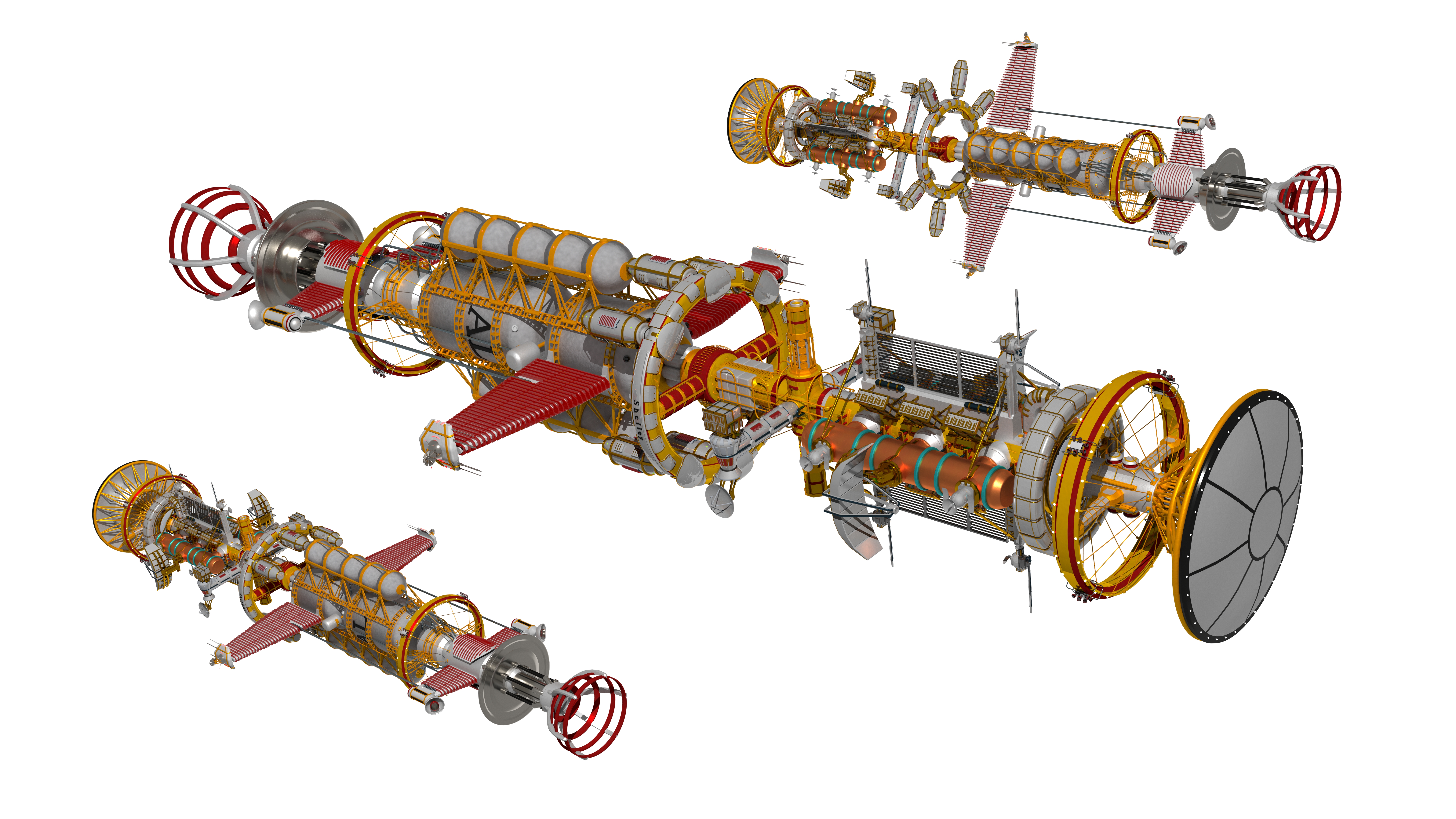
#3d #3ds #big #concept #fission #future #jovian #jupiter #model #nuclear #orion #realistic #rocket #space #spaceship #warship #rocketpunk
Published: 2020-08-19 22:52:28 +0000 UTC; Views: 5050; Favourites: 125; Downloads: 50
Redirect to original
Description
Here's a short animation of this ship, a youtube link since I have no idea how or if I can upload it to DA: Link
It's unlikely I'll do this in the future because of the ludicrous time it takes to render it, but still fun to look at.
Command ship - Shelly
Length: 210m
Height: 36m (58 with habitat sections expanded)
Width: 80m
Dry mass: 2 300 tons
Full load: 12 800 tons
Complement: 108
Main engine: Mini-Mag Orion
Thrust: 1,87 MN
Propellant: Pulse units
Propellant supply: 10 000 tons
Mass flow: 12 kg/s
Acceleration while fully loaded: 0,14 m/s
Delta-v: 238,6 km/s
Armaments:
4x 200mm EM canon
50x 1x1x3m missile silos
Shelly, referred to as a command ship, is in reality more of a Frankenstein ship, birthed by modifying stolen martian cargo ships. While there were covert attempts to suppress overtaking of ships before the conflict started, and they did prove to be successful to a point, ships were lost nonetheless. Either by mutiny of Jovian passengers and crew members from the inside or external pressure by pirates with Jovian roots, decent number of Carthage class cargo ships were stolen. Carthages were especially vulnerable since they often acted independently, away from beaten paths, and usually carried various passengers which outnumbered ship's crew. Most of these stolen ships were intercepted before they reached Jovian system, and where either retaken or destroyed. Since Carthage class is of sturdy construction and a reliable design, Jovians were able to convert them to moderately successful warships which filled an important role in their early fleet. It was a simple matter to add missiles to civilian ships, however without proper guidance, coordination and electronic support their effectiveness was minimal. This is why Shelly class was fashioned as a makeshift command ship, with majority of its modifications focusing on sensors and communication equipment. Its weaponry is primarily of defensive nature so it could support ships surrounding it against Martian long range weaponry. Additional modifications included replacing Martian habitat sections on the ring, with Jovian ones, since those were built to act as detachable life rafts. And adding an additional, armored ring, placed near the forward facing shield, which acted as a more secure location for main bridge.
Each of these ships had a group around it, a small fleet of various, mostly civilian, ships forming individual task forces. No two task forces were exactly alike or even permanent, which is why Shelly's had large crews enabling them to adapt to constantly changing composition of surrounding ships and possible tactics. Even well-established task forces would mostly avoid attacking Martian positions since such actions would produce high amount of casualties with questionable chances of success. Instead, their role was mostly defensive, usually escorting important cargo transfers. Presence of these protective task forces were an obvious target on cargo convoys, which was in itself an opportunity to lure Martian warships into chasing cargo ships carrying nothing of value. By forming uncommonly large defensive task forces, Jovians would force their enemies to deploy appropriate number of warships which could present exploitable openings. Majority of Jovian-Martian war played in this manner, essentially an unforgiving cat and mouse game, with Jovians trying to stretch out Martian warships, while Martians on the other side kept pushing for a direct confrontation.
The somewhat secure material transfers are the reason Jovians were able to develop and construct their own fusion warships, the Clarke class destroyers. On their own, Clarkes where definitely no match to Martian destroyers, but when supported with Shellys they were able to go nearly toe to toe with Lothbroks.


